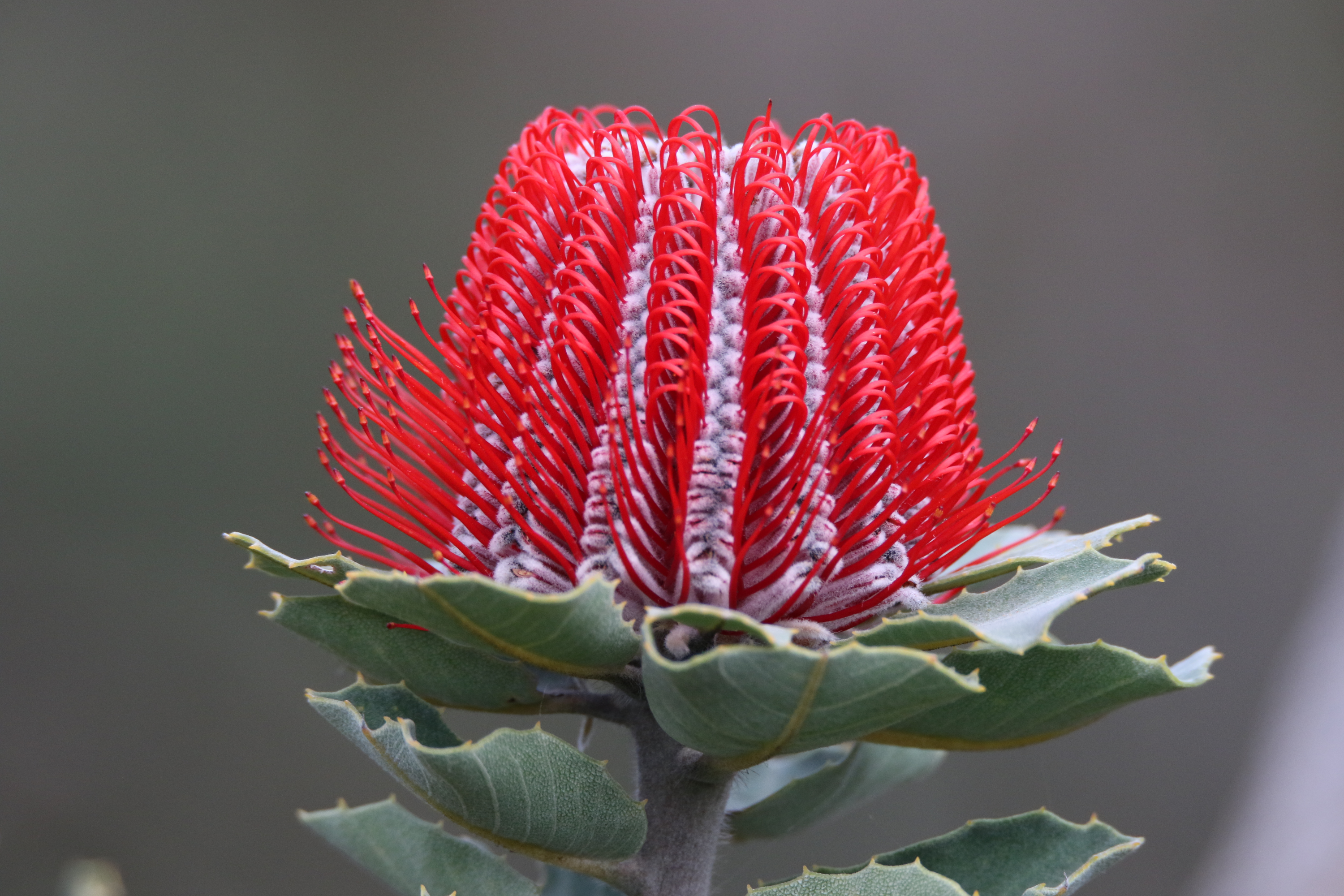Scarlet banksia
(Banksia coccinea)

Description
Banksia coccinea, commonly known as the scarlet banksia, waratah banksia or Albany banksia, is an erect shrub or small tree in the family Proteaceae. Its distribution in the wild is along the south west coast of Western Australia, from Denmark to the Stokes National Park, and north to the Stirling Range, growing on white or grey sand in shrubland, heath or open woodland. Reaching up to 8 m (26 ft) in height, it is a single-stemmed plant that has oblong leaves, which are 3–9 cm (1.2–3.5 in) long and 2–7 cm (0.8–2.8 in) wide. The prominent red and white flower spikes appear mainly in the spring. As they age they develop small follicles that store seeds until opened by fire. Though widely occurring, it is highly sensitive to dieback and large populations of plants have succumbed to the disease. Collected and described by Robert Brown in the early 19th century, Banksia coccinea appears to be most closely related to Banksia speciosa and B. baxteri. Banksia coccinea plants are killed by bushfire, and regenerate from seed. The flowers attract nectar- and insect-feeding birds, particularly honeyeaters, and a variety of insects. Widely considered one of the most attractive Banksia species, B. coccinea is a popular garden plant and one of the most important Banksia species for the cut flower industry; it is grown commercially in several countries including Australia, South Africa, Canada, the United States, New Zealand and Israel. In cultivation, B. coccinea grows well in a sunny location on well-drained soil, but it cannot survive in areas with humid or wet summers. The scarlet banksia grows as an erect shrub or small tree, generally around 2–4 m (6.6–13.1 ft) tall, with little lateral spread. However, it can reach 8 metres (26 ft) in height, particularly in the vicinity of Albany. The trunk is generally single at the base before branching, and covered with smooth grey bark that is 2–5 mm (0.079–0.197 in) thick and lacking in lenticels. Peaking in the summer months, the pinkish-brown new growth is densely hairy. The oblong, cordate or obcordate leaves are 3–9 cm (1.2–3.5 in) long and 2–7 cm (0.8–2.8 in) wide, with 3–5 mm (0.12–0.20 in) long petioles. Truncate at the apex, they have dentate margins with small (1–3 mm long) teeth 3–18 mm (0.12–0.71 in) apart, separated by shallow u- or v-shaped sinuses. The upper surface is covered in fine fur when young and becomes smooth with age, while the undersurface is covered with white fur, particularly along the midrib.
Taxonomic tree:







